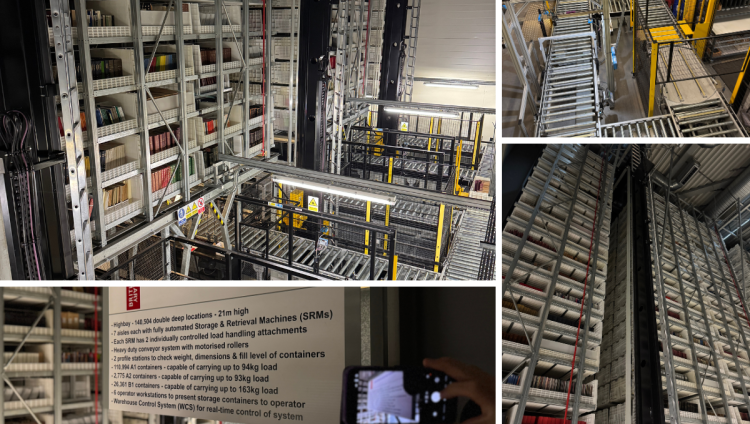'Leading the way in library storage,' how the British Library is writing a new chapter in energy efficiency

- The British Library is "leading the way in library storage being done in a low carbon way”
- Institution received over £10m to be greener and more energy efficient
- The library is the largest in the world, holding more than 200 million items at its sites in London and Yorkshire
- Project funding came from the government's Public Sector Decarbonisation Scheme, delivered by Salix
Every year, three million items are added to the British Library's collection of books, magazines, maps, audio/video recordings and other artefacts. No wonder then that the library is growing at a rate of six miles of new shelves a year.
Powering a growing site is a challenge, but fortunately funding and innovation have come together to provide energy efficient, green solutions. The library has benefitted from over £10m in Public Sector Decarbonisation Scheme funding from the Department for Energy Security and Net Zero, delivered by Salix.
The library's base at St Pancras in London will be best-known to the public, but in this video we're proud to be able to bring you a rare look inside the institution's other site - a former military base near Leeds - which is home to around two-thirds of its collection.

'Grants have been absolutely fundamental'
"Decarbonising our buildings is one of our main strategic aims," said Catherine Ross, head of sustainability at the British Library. "It’s part of our sustainability strategy and the two Public Sector Decarbonisation Scheme grants have been absolutely fundamental to enabling us to do that.
“We’re very proud of what we’ve been able to do here. We're leading the way in low carbon library storage through retrofitting our site and our new passive house storage building.
“For me, probably the most exciting project to look at is the solar thermal. We’ve got possibly the largest solar thermal installation anywhere in the UK and it's exciting to be at the forefront of new technology.
“We've cut our emissions at the library by 67 per cent from the year where we first started measurements and we’ve got more carbon savings to come."

Morgan Allen from CBRE UK real estate shows off the library's new energy efficient lighting. Picture credit: Salix
More than 500 staff work at the British Library's site at Boston Spa, West Yorkshire - but what are they doing? Well, by law a copy of every work which published in the UK since 1662 must be placed in the British Library. Indeed, that rule - the Legal Deposit Act - was expanded in 2013 to include digital publications such as websites and blogs.
Incidentally, one thing staff aren't doing is placing the books on the shelves. That's done by robots, or "automation" in the site's Additional Storage Building, which opened in 2009 and can hold 11 million books.
Each evening a van takes books requested by the public to the capital from the 44-acre facility near Leeds, where its buildings include ex-World War Two munitions workshops.

Inside the Additional Storage Building, where automation puts the books onto the shelves. Picture credit: Salix
With miles of new shelving needed in Boston Spa every year, the storage space constantly needs to expand, also meaning increasing energy demands as the artefacts must be stored at a safe temperature and in a protective, low-oxygen environment. So, energy efficiency upgrades across the library's two sites were much needed. These included:
- From Public Sector Decarbonisation Scheme Phase 1, a solar thermal installation at St Pancras and a ground source heat pump installation in Boston Spa
- From Public Sector Decarbonisation Scheme Phase 3, air source heat pumps and solar panels on one of the library's largest storage buildings in Boston Spa
We’re just about to start another building for a private sector client, which is three times the size of this. We probably wouldn’t have had the confidence had we not applied it first on this Public Sector Decarbonisation Scheme project.
“The total system capacity is about 1.2 megawatts, which is the biggest heat pump retrofit project we’ve done," explained Bob Senior, director, KJ Tait engineers. "We’re just about to start another building for a private sector client – which is 3.6 megawatts, so three times the size of this. We probably wouldn’t have had the confidence to tackle that had we not applied it on this Public Sector Decarbonisation Scheme project first.
“The heatpump project is allowing the library to remove one of their 1.2 megawatt gas boilers," he continued. "That will reduce carbon emissions by about 75 percent for those two buildings. We will then be about three quarters of the way into decarbonising all of the buildings on this site as part of the wider programme.”




